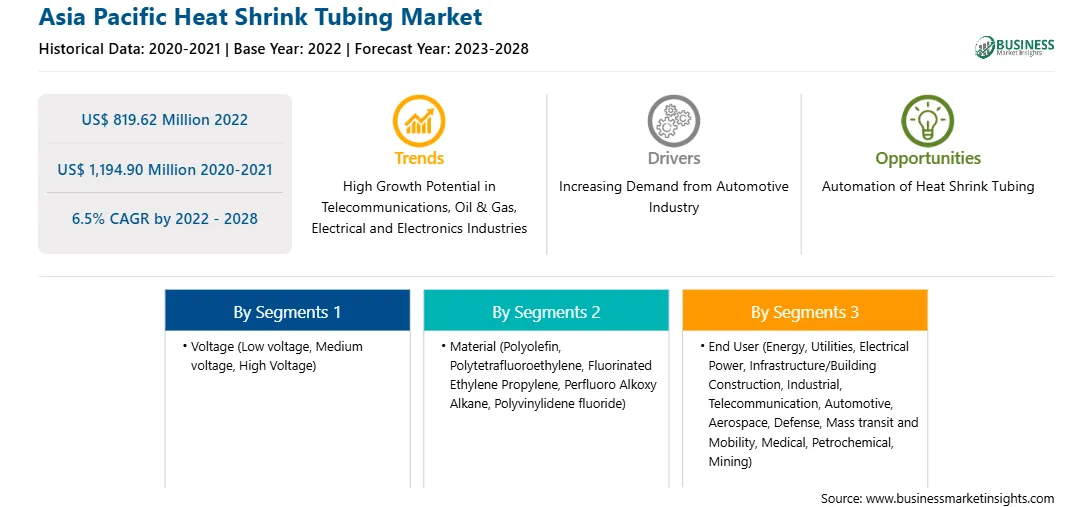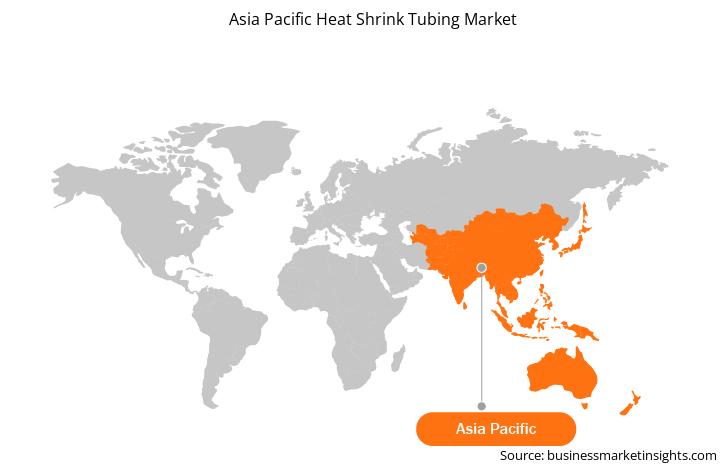Heat shrink tubing is used to insulate wire conductors, as well as protect and seal cables. Performing heat shrink tubing manually can invite risk, apart from being a time-consuming process. Automating this process minimizes the operators' direct interaction with wires, decreases production costs over the long term, and dramatically improves quantitative and qualitative production indicators.
An automated heat shrink tubing consists of an instrumented heat chamber on a linear positioning system fitted with heat guns. The chamber design directs the hot air from the heat guns onto the wire harness uniformly with the help of radially distributed channels. A control unit continuously manages the actuator position by measuring the chamber’s speed and temperature. In automated heat shrink tubing, the workpieces are loaded into a machine and automatically passed through a heating tunnel. These machines can address the precise shrinkage specifications due to the automatic movement of workpieces.
Many aircraft, automobiles, and spacecraft require large bundles of wires that would stretch over several kilometers, if extended fully. Putting all these wires into an automated heat shrink tubing can save time, mitigate risk of an electrical short, provides a standardized process, and installation time can be significantly decreased, as well as provides protection against adverse effects of vibrations, abrasions, and moisture.
Thus, owing to the benefits provided, automation of heat shrink tubing is emerging as a significant trend in the Asia Pacific heat shrink tubing market.
Population across countries such as India, Malaysia, Singapore, and China are actively adopting various smart home technologies, including smart light and IoT devices.
The region over the years has also experienced a rise in urbanization rate. According to the data published by the World Bank, India experienced a rise in urban population by 2.32% in 2021. Moreover, 61% of the total population of China is now living in urban areas. According to the same source, the increasing disposable income and growing technology adoption in China are further expected to boost the demand for various smart home technologies in order to develop connected homes.
This is expected to propel the demand for various wires across the residential sector, thereby contributing to the growth of the Asia Pacific heat shrink tubing market in APAC.
The region homes two of the most fastest developing countries—China and India. Both countries are experiencing rapid infrastructural development in both residential and commercial sectors. A few of the major developments are mentioned below:
• The Chinese MOT in 2018 announced its plans to have 400 airports by 2035, while 240 airports are already constructed, and 160 airports will be completed by 2035. Additionally, the aviation ministry in October 2022 announced its plans to construct 80 new airports in the next 5 years.
• The Delhi government in August 2022 announced its intention to develop 11 new hospitals with more than 10,000 beds in upcoming years. Similarly, in March 2022, the state government announced its plans to upgrade 49 hospitals for setting up a medical complex in Pune over the next five years.
These infrastructural developments across China and India are directly triggering the need for several wires and cables for installation purposes across the buildings for proper network and power connections. These factors are thereby expected to boost the growth of the APAC heat shrink tubing market size.
Sumitomo Electric Industries Ltd, Shenzhen Woer Heat - Shrinkable Material Co. Ltd., and Shanghai Changyuan Electronic Material Co. Ltd are a few major heat shrink tubing market players operating in Asia Pacific.
The Asia Pacific heat shrink tubing market is segmented into voltage, material, end user, and country.
Based on voltage, the Asia Pacific heat shrink tubing market is segmented into low voltage (less than 5kv), medium voltage (5-35 kv), and high voltage (above 35kv). In 2022, the low voltage (less than 5kv) segment registered a largest share in the Asia Pacific heat shrink tubing market.
Based on material, the Asia Pacific heat shrink tubing market is segmented into polyolefin, polytetrafluoroethylene, fluorinated ethylene propylene, perfluoro alkoxy alkane, polyvinylidene fluoride, and others. In 2022, the polyolefin segment registered a largest share in the Asia Pacific heat shrink tubing market.
Based on end user, the Asia Pacific heat shrink tubing market is segmented into energy, utilities, electrical power, infrastructure/building construction, industrial, telecommunication, automotive, aerospace, defense, mass transit and mobility, medical, petrochemical, and mining. In 2022, the utilities segment registered a largest share in the Asia Pacific heat shrink tubing market. The energy segment is further segmented into renewable and non-renewable.
The utilities segment is further segmented into electricity, natural gas, steam supply, water supply, and sewage removal. The electrical power segment is further segmented into power generation, power transmission , and power distribution. The infrastructure/building construction segment is further segmented into residential & commercial, data centers, distribution, HVAC, and infrastructure. The industrial segment is further segmented into residential & commercial, data centers, distribution, HVAC, and infrastructure. The industrial segment is further segmented into industrial equipment and industrial electrical. The telecommunication segment is further segmented into wireless, broadband, CATV, and others. The automotive segment is further segmented into heavy duty machinery and agriculture, EV vehicles, hybrid vehicles, diesel vehicles, gasoline vehicles, and autonomous vehicles. The aerospace segment is further segmented into commercial aircraft, space exploration, and others. The defense segment is further segmented into military aircraft, military equipment & machinery, and others. The mass transit and mobility segment is further segmented into mass transit and mobility. The medical segment is further segmented into high temperature (150 C>) and low temperature (<150 C).
Based on country, the Asia Pacific heat shrink tubing market is segmented into China, Japan, India, South Korea, Australia, and the Rest of Asia Pacific. In 2022, China segment registered a largest share in the Asia Pacific heat shrink tubing market.
3M Co, HellermannTyton Ltd, Molex LLC, Sumitomo Electric Industries Ltd, TE Connectivity Ltd, Zeus Industrial Products Inc, Shenzhen Woer Heat-Shrinkable Material Co Ltd, and Shanghai Changyuan Electronic Material Co Ltd are some of the leading companies operating in the Asia Pacific heat shrink tubing market.
Strategic insights for the Asia Pacific Heat Shrink Tubing provides data-driven analysis of the industry landscape, including current trends, key players, and regional nuances. These insights offer actionable recommendations, enabling readers to differentiate themselves from competitors by identifying untapped segments or developing unique value propositions. Leveraging data analytics, these insights help industry players anticipate the market shifts, whether investors, manufacturers, or other stakeholders. A future-oriented perspective is essential, helping stakeholders anticipate market shifts and position themselves for long-term success in this dynamic region. Ultimately, effective strategic insights empower readers to make informed decisions that drive profitability and achieve their business objectives within the market.

| Report Attribute | Details |
|---|---|
| Market size in 2022 | US$ 819.62 Million |
| Market Size by 2028 | US$ 1,194.90 Million |
| Global CAGR (2022 - 2028) | 6.5% |
| Historical Data | 2020-2021 |
| Forecast period | 2023-2028 |
| Segments Covered |
By Voltage
|
| Regions and Countries Covered | Asia-Pacific
|
| Market leaders and key company profiles |
The geographic scope of the Asia Pacific Heat Shrink Tubing refers to the specific areas in which a business operates and competes. Understanding local distinctions, such as diverse consumer preferences (e.g., demand for specific plug types or battery backup durations), varying economic conditions, and regulatory environments, is crucial for tailoring strategies to specific markets. Businesses can expand their reach by identifying underserved areas or adapting their offerings to meet local demands. A clear market focus allows for more effective resource allocation, targeted marketing campaigns, and better positioning against local competitors, ultimately driving growth in those targeted areas.

The Asia Pacific Heat Shrink Tubing Market is valued at US$ 819.62 Million in 2022, it is projected to reach US$ 1,194.90 Million by 2028.
As per our report Asia Pacific Heat Shrink Tubing Market, the market size is valued at US$ 819.62 Million in 2022, projecting it to reach US$ 1,194.90 Million by 2028. This translates to a CAGR of approximately 6.5% during the forecast period.
The Asia Pacific Heat Shrink Tubing Market report typically cover these key segments-
The historic period, base year, and forecast period can vary slightly depending on the specific market research report. However, for the Asia Pacific Heat Shrink Tubing Market report:
The Asia Pacific Heat Shrink Tubing Market is populated by several key players, each contributing to its growth and innovation. Some of the major players include:
The Asia Pacific Heat Shrink Tubing Market report is valuable for diverse stakeholders, including:
Essentially, anyone involved in or considering involvement in the Asia Pacific Heat Shrink Tubing Market value chain can benefit from the information contained in a comprehensive market report.